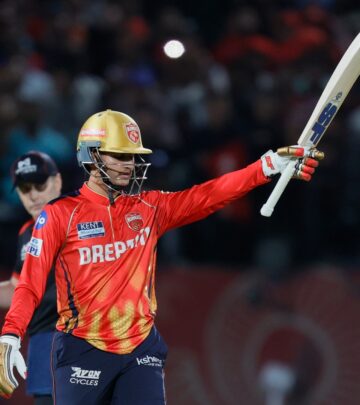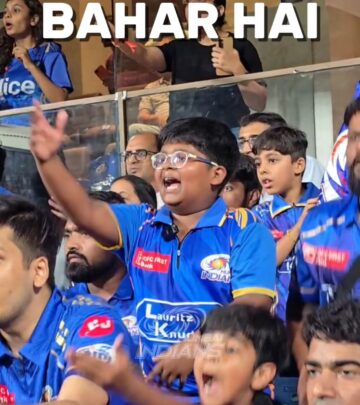Max Effort Training Caps Fast Bowling Pace
Technique variation is key to breaking pace ceilings and boosting fast bowling performance.

Image: Instagram
Fast bowling, a critical element in cricket, hinges not only on raw strength and intensity but also on the intricate balance of training variations. Recently, sports training expert Steffan Jones (@steffanjones105) highlighted a crucial barrier known as the pace ceiling—a condition where bowlers hit a performance plateau due to an overreliance on all-out, maximum intensity drills. This phenomenon is increasingly under scrutiny as experts push for a more science-driven and balanced approach to fast bowling techniques.
The Pace Ceiling Explained
The concept of a pace ceiling refers to the stage at which a bowler, despite repeated maximum effort training, is unable to increase or sustain impressive bowling speeds. According to the insights shared by Steffan Jones, this stagnation is largely due to poor training structure. The emphasis on max effort without incorporating submaximal drills leads to neural fatigue and an inability for the central nervous system (CNS) to recover, which ultimately limits speed and technical improvements.
Overreliance On Max Effort Training
Jones explains that constant training at maximum intensity can be counterproductive. Repeated all-out efforts result in neural fatigue, where the CNS struggles to recover between sessions. Over time, this reduces force output and can lead to slower motor firing. With diminished capacity, bowlers experience inefficient movement patterns that hinder technical improvement. Furthermore, athletes training exclusively at 100% intensity miss the opportunity to fine-tune their technique, as rapid movements do not allow sufficient time for motor learning or technique correction.
The Hidden Costs: Injuries And Endurance
Another significant downside to adhering strictly to max effort training is the risk of overuse injuries. Chronic high-velocity loading, particularly when performed without variation, puts excessive strain on vital structures such as the lumbar spine, shoulders, and hamstrings. This can lead to stress fractures and soft tissue breakdown. Additionally, without integrating lower-intensity or repeat-effort training, bowlers often struggle with speed endurance during longer spells in matches, creating a noticeable gap between peak speed and sustainable performance.
Importance Of Technical Layering
Technical layering refers to the incorporation of submaximal drills that help build a robust technical foundation. By performing slower reps, bowlers have the opportunity to consolidate and refine their mechanics, ensuring that any corrective feedback can be integrated into their fast-paced movements. The absence of these drills means that bowlers may become mechanically compromised over time—a problem that is difficult to diagnose if only maximum intensity training is in play.
Broader Implications For Training Regimens
In the realm of fast bowling, where every fraction of a second counts, the training strategy must evolve. Steffan Jones and other experts in the field have been advocating for structured variation in intensity, volume, and technical focus. The encouraging mantra, ‘Speed wins—but speed with structure lasts,’ encapsulates the essence of this balanced training approach. Rather than relying solely on max-effort drills, there is a growing consensus that a mix of high-intensity and submaximal practices can enhance performance while reducing injury risk.
Integrating Science Into Practice
Drawing on his extensive experience, Jones underscores that there is science behind every aspect of fast bowling. He challenges outdated training methods, urging bowlers and coaches alike to embrace the scientific principles that can help them overcome the pace ceiling. In previous posts, Jones has also discussed the necessity of fatigue management, emphasizing that understanding and controlling fatigue is crucial for optimal performance. The scientific evidence suggests that proper recovery, when coupled with varied training intensities, can reset the CNS and potentiate explosive performance.
Insights From Related Coaching Techniques
Additional perspectives from the world of Pacelab training highlight the importance of managing neural fatigue and the proper sequencing of drills. Other experts in speed and strength training for fast bowling emphasize that techniques like the Recharge Circuit—a method designed to restore CNS readiness—can be invaluable. This circuit consists of high-speed, low-load exercises that help maintain dopamine levels and motor coordination without overloading the system. Such innovations in training not only preserve the bowler’s natural speed but also ensure longevity and reduced risk of injuries.
Looking Ahead
As the conversation about fast bowling training continues to evolve, it becomes clear that adhering to a rigid, max-effort-only approach may eventually cap a bowler’s pace and effectiveness. Modern training paradigms are increasingly recognizing that combining technical drills, varied intensity levels, and structured recovery leads to both better performance and reduced injury rates. Steffan Jones’ perspective, rooted in decades of observation and practice, resonates with a growing number of coaches and athletes who seek to optimize performance without sacrificing longevity.
In conclusion, the pace ceiling is not an unavoidable fate but rather a challenge that can be addressed through careful, science-backed training adjustments. By integrating technical layering and consciously managing neural fatigue, fast bowlers can unlock their full potential. As coaches and athletes look to the future, the call remains clear: think differently, train smarter, and break through the pace ceiling with structure and precision.
Read full bio of Joyce







